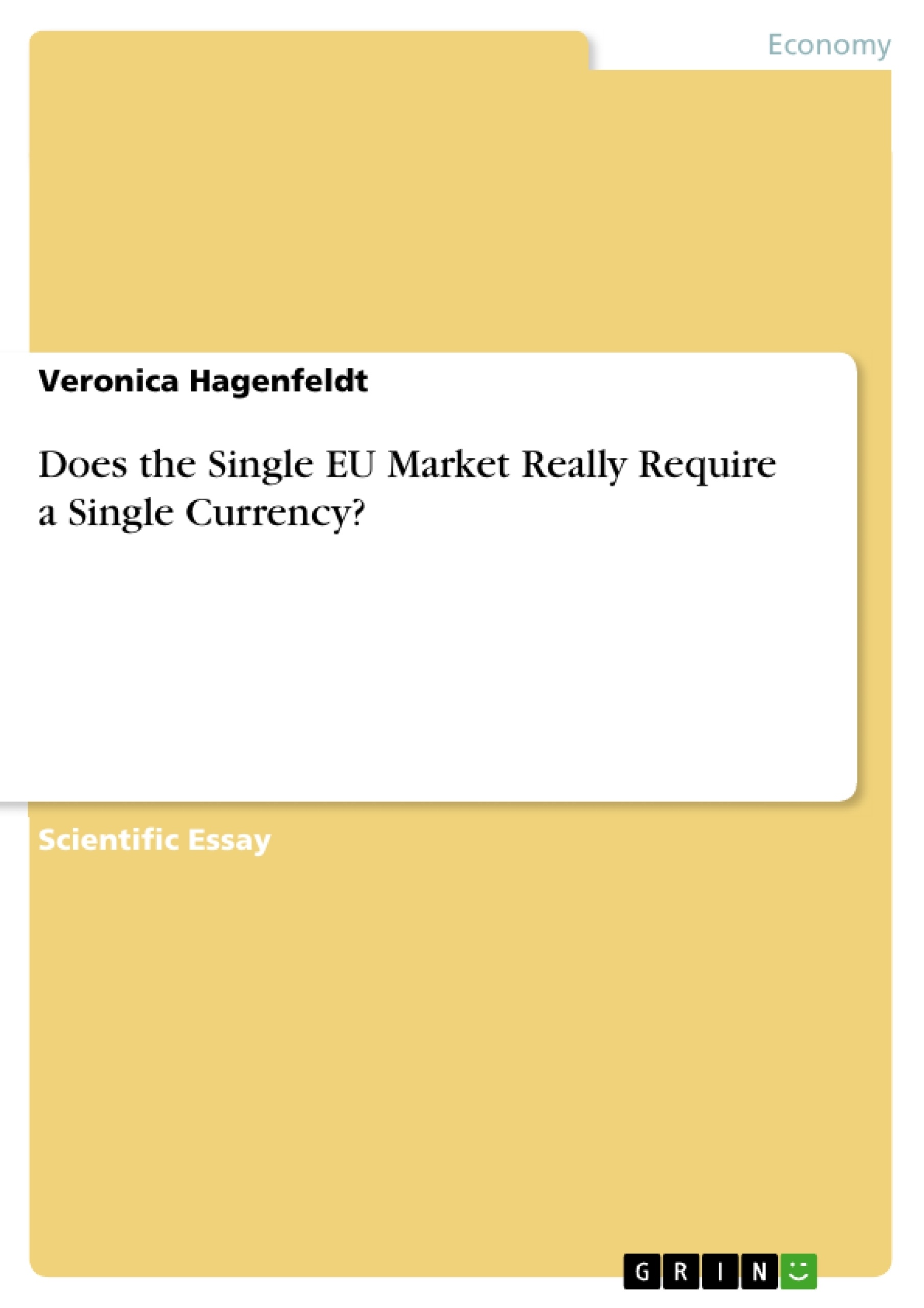Part I of this paper will illustrate that although the currency union signified the next significant step along the European integration ladder that was built already back in 1958, it must be recognised that the single market is not yet fully established in Europe. Hence the phrasing of the title question suggests the reading of whether or not the single currency is absolutely necessary for the completion of the single market. Part II is dedicated to the central aim of this paper, namely to assess to what extent the common currency furthers, or indeed counteracts, the achievement of the fundamental single market objective. While this essay goes to lengths in highlighting the desirability of the single currency and its many benefits that help further the achievement of the single market, it does however maintain that the currency union is not absolutely necessary for the establishment of the common market. Indeed, as has been noted, “it is possible to have a single market without a single currency”. Furthermore, as will be shown in the forthcoming sections of Part II, there are even situations in which the single currency might be harmful to the single market and to the Union. Although the answer to the title question of whether a single currency is really required must necessarily be in the negative since the single market could potentially exist without the euro, this essay will conduct an extensive evaluation of the successes and failures of the euro and the Economic and Monetary Union (EMU) to further the single market objective in order to illustrate that the euro has nonetheless both enabled it to function much more efficiently and helped to bring European economic and political integration to previously unknown levels. In this sense the single market does not necessarily require a single currency, but the euro will nevertheless be hugely important in furthering its establishment.
Inhaltsverzeichnis (Table of Contents)
- INTRODUCTION
- PART I – THE EVOLUTION OF THE SINGLE MARKET AND THE SINGLE CURRENCY
- 1.1 Origins and Development of the Single Market
- 1.1.1. The Single Market Complete or Not Complete, That is the Question
- 1.2. Origins and Development of the EMU and the Euro
- 1.1 Origins and Development of the Single Market
- PART II - EVALUATION OF THE EURO'S SUCCESSES AND FAILURES IN FURTHERING THE SINGLE MARKET OBJECTIVE
- 2.1. Benefits – the Euro Furthering the Single Market Objective
- 2.1.1. Economic Benefits
- 2.1.2. Political Benefits
- 2.1.3. Social Benefits
- 2.2. Costs the Euro Counteracting the Single Market Objective
- 2.2.1. Persisting National Divergences
- 2.2.2. Breakdown in Fiscal Coordination and Spillover Effects
- 2.1. Benefits – the Euro Furthering the Single Market Objective
- CONCLUSION
Zielsetzung und Themenschwerpunkte (Objectives and Key Themes)
This paper investigates the relationship between the single European market and the Eurozone. It aims to determine whether the single currency is essential for the successful functioning of the single market and to analyze the extent to which the euro has either facilitated or hindered the achievement of the single market objective.
- The evolution and development of the single market and the Eurozone
- The benefits of the euro for furthering the single market objective
- The potential costs of the euro for counteracting the single market objective
- The analysis of optimal currency area theory in relation to the EU
- The question of whether the single market is truly complete
Zusammenfassung der Kapitel (Chapter Summaries)
The first part of the paper examines the historical development of both the single market and the Eurozone. It discusses the origins and progression of the single market project, highlighting the establishment of the European Customs Union and the significant steps taken towards completion in the 1980s and 1990s. It also investigates the origins and development of the Economic and Monetary Union (EMU) and the euro, discussing the limitations of the EU as an optimal currency area according to economic theory. The second part of the paper delves into the evaluation of the euro's impact on the single market. It explores the benefits, including economic, political, and social advantages, that the euro brings to the single market. The chapter also examines potential costs and challenges, such as persisting national divergences and the breakdown of fiscal coordination, that may arise from the euro's implementation. While this preview does not delve into the conclusion of the paper, it provides a comprehensive overview of the key themes, arguments, and narrative elements discussed in the main body of the text.
Schlüsselwörter (Keywords)
The paper focuses on the relationship between the single European market, the Eurozone, and the single currency. Key terms include: European integration, single market, free movement of goods, services, persons, and capital, European Customs Union, Economic and Monetary Union (EMU), the euro, optimal currency area, economic benefits, political benefits, social benefits, fiscal coordination, spillover effects, national divergences, and the completion of the single market.
- Quote paper
- Veronica Hagenfeldt (Author), 2009, Does the Single EU Market Really Require a Single Currency?, Munich, GRIN Verlag, https://www.grin.com/document/169619



